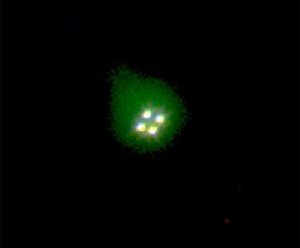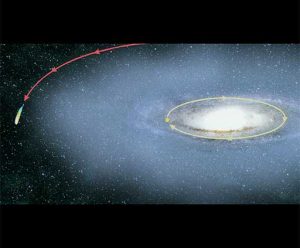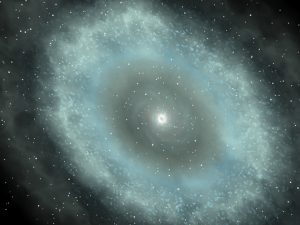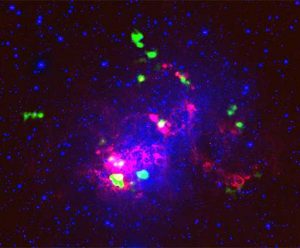Astronomers have discovered a key signpost of rapid star formation in a galaxy 11 billion light-years from Earth, seen as it was when the Universe was only 20 percent of its current age.
GBT Reveals Satellite of Milky Way in Retrograde Orbit
New observations with National Science Foundation’s Green Bank Telescope suggest that what was once believed to be an intergalactic cloud of unknown distance and significance, is actually a previously unrecognized satellite galaxy of the Milky Way orbiting backward around the Galactic center.
Giant Cosmic Lens Reveals Secrets of Distant Galaxy
An international team of astronomers has discovered that a young galaxy had a central disk of gas in which hundreds of new stars were being born every year — at a time when the Universe was only a fraction of its current age.
Surprising Image Revises Understanding Of Dwarf Galaxies
An intensive study of a neighboring dwarf galaxy has surprised astronomers by showing that most of its molecular gas — the raw material for new stars — is scattered among clumps in the galaxy’s outskirts, not near its center as they expected.
Giant Radio Jet Coming From Wrong Kind of Galaxy
Giant jets of subatomic particles moving at nearly the speed of light have been found coming from thousands of galaxies across the Universe, but always from elliptical galaxies or galaxies in the process of merging — until now.
Clouds Dominate the Galactic Halo
Using the exquisite sensitivity of the National Science Foundation’s Green Bank Telescope, astronomer Jay Lockman of the National Radio Astronomy Observatory in Green Bank, West Virginia, has produced the best cross-section ever of the Milky Way Galaxy’s diffuse halo of hydrogen gas.











